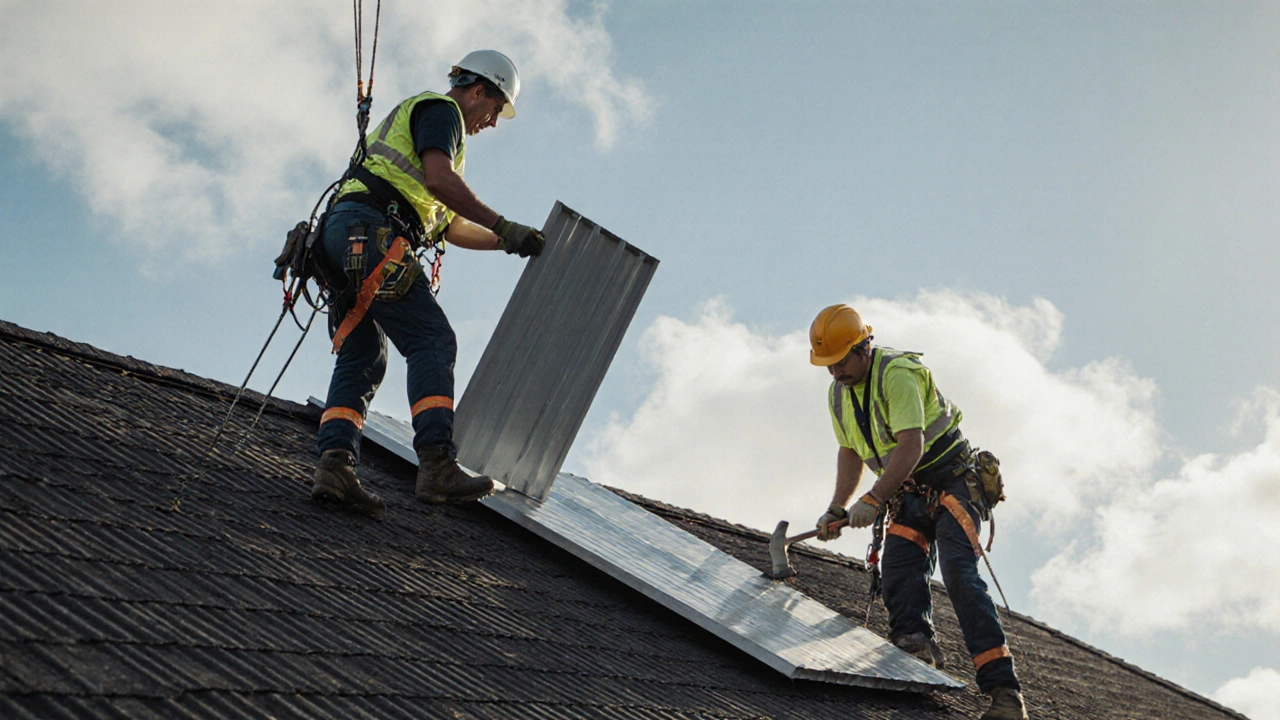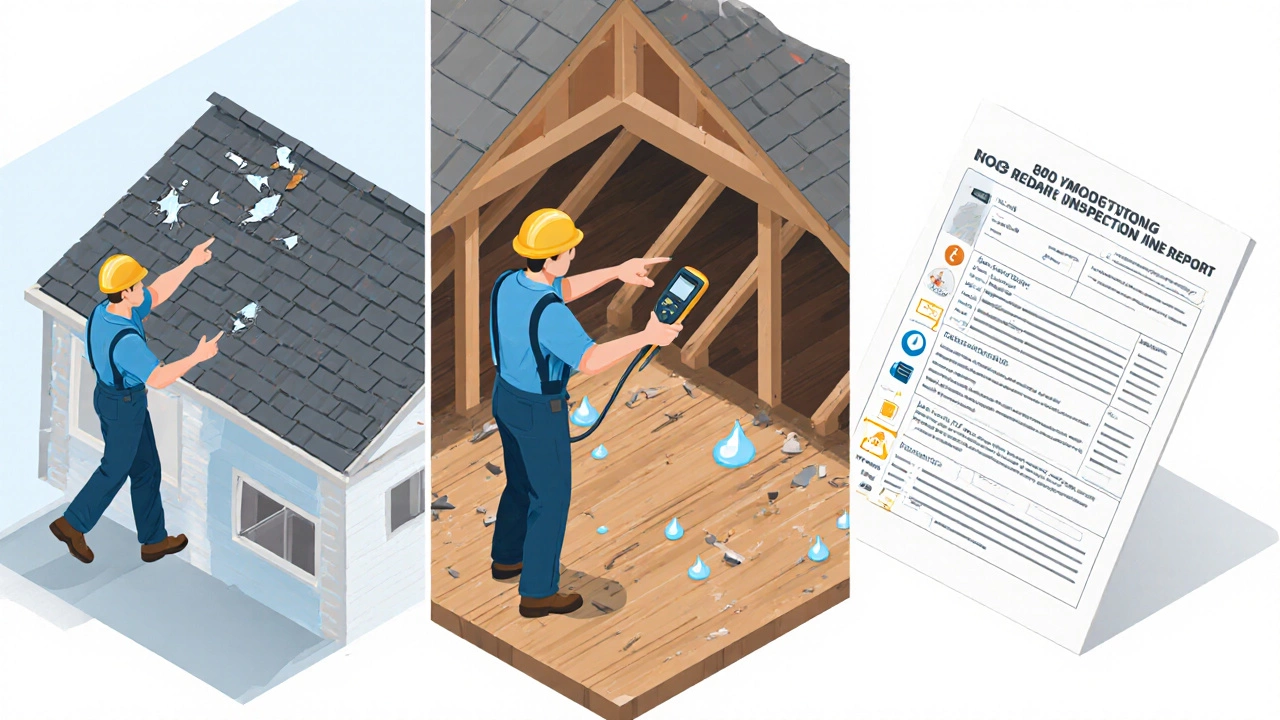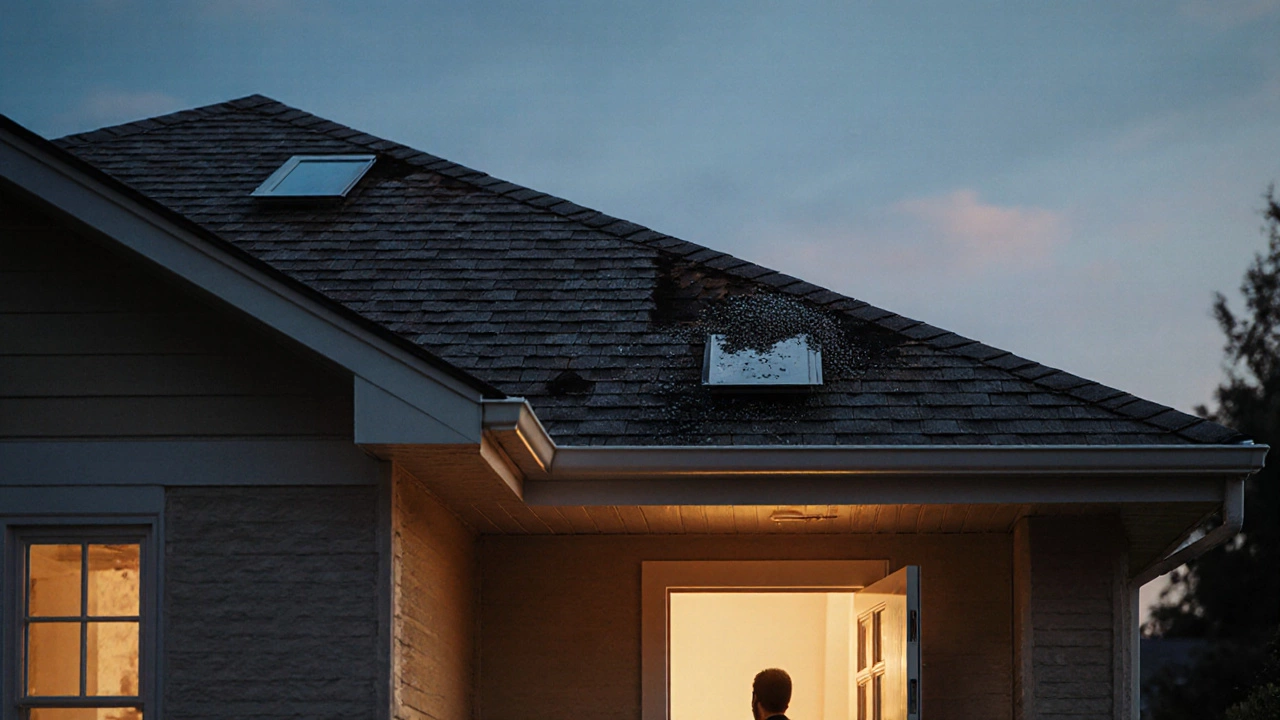Quick Takeaways
- Visible signs like leaks, missing shingles, or sagging roofs mean it’s time to call a roofer.
- Professional roofers handle safety, code compliance, and warranty issues that DIY can’t.
- Calling a roofer early can prevent costly water damage and preserve property value.
- Choose a roofer with proper licensing, insurance, and positive local reviews.
- Understanding the inspection process helps you stay in control and avoid surprise costs.
When your house starts showing trouble on the top, it’s easy to ignore it until the problem gets worse. A dripping ceiling, a cracked tile, or a roof that looks uneven can feel like minor annoyances, but they’re often early warnings that something’s wrong up there. Knowing Roofer is a licensed professional who installs, repairs, and maintains roofs on residential buildings and when to bring one in can save you from a flood of headaches, expensive repairs, and safety hazards.
Common Signs Your Roof Needs Professional Attention
Not every roof problem screams for a roofer, but several tell‑tale signs are hard to miss:
- Water stains on ceilings or walls - Often caused by a Roof Leak that allows moisture to seep through the roofing membrane.
- Missing, cracked, or curled Asphalt Shingle pieces - These are the most visible, especially after a storm.
- Granule loss in gutters - When you see dark specks in the Gutter, it means the shingles are deteriorating.
- Humming or rattling noises during wind - Could indicate loose roofing panels, especially on Metal Roof systems.
- Visible sagging or unevenness on the Roof surface - A structural issue that demands immediate professional evaluation.
If any of these pop up, it’s a clear cue that a qualified roofer should be on your phone line.
Safety and Legal Reasons to Call a Professional
Climbing a ladder or stepping onto a steep roof sounds like a weekend project, but it’s a high‑risk activity. Professional Roofing Contractor teams are trained in fall protection, proper harness use, and weather‑related safety protocols. In NewZealand, the Health and Safety at Work Act requires that any work at height be performed by competent persons. If you skip hiring a roofer, you could be breaching these regulations and exposing yourself to personal injury claims.
Besides personal risk, improper repairs can violate local building codes, leading to fines or having to redo the work. A licensed roofer knows the Auckland council’s specific roof ventilation and fire‑rating requirements, ensuring the job passes inspection the first time.

Cost Savings: Why DIY Can Cost More
It’s tempting to buy a ladder, a bag of shingles, and try to fix the problem yourself. The reality is that DIY often ends up pricier for three main reasons:
- Hidden damage - A simple leak may mask rot in the decking, requiring more extensive replacement.
- Improper installation - Misaligned shingles or poorly sealed flashings can cause recurring leaks, meaning you’ll pay for repairs again.
- Warranty void - Most manufacturers’ warranties require installation by a certified roofer. If you do it yourself, you lose eligibility for free material replacements.
When you factor in time, tools, and the risk of errors, hiring a roofer often ends up cheaper in the long run.
Insurance and Warranty Considerations
Most home insurance policies in NewZealand cover roof damage caused by natural events like Storm Damage, but they typically require a professional assessment before approving a claim. An experienced roofer can provide the detailed report an Insurance Adjuster needs, speeding up the payout process.
Additionally, many roofing manufacturers offer extended warranties that are only valid when the work is performed by a registered installer. By calling a roofer, you protect both your investment and your peace of mind.
How to Choose the Right Roofer
Not all roofers are created equal. Here’s a quick checklist to narrow down the best fit for your home:
- Licensing and insurance - Verify they hold a valid builder’s licence and public liability insurance.
- Local experience - A roofer who has worked in Auckland will understand the regional climate and council regulations.
- References and reviews - Look for recent testimonials, especially about similar roof types (e.g., Metal Roof vs. Asphalt Shingle).
- Written estimates - A clear, itemized quote helps you compare costs without hidden fees.
- Warranty coverage - Ask what guarantees are offered on both labour and materials.
When a roofer ticks these boxes, you can move forward with confidence.

What to Expect During a Roof Inspection
A professional inspection usually follows these steps:
- Exterior visual survey - The roofer walks the perimeter, checking for broken shingles, damaged flashings, and debris accumulation.
- Interior assessment - Inside the attic, they look for moisture stains, mould, and ventilation issues.
- Moisture testing - Using a moisture meter, they pinpoint hidden leaks behind the surface.
- Report and recommendation - You receive a written summary outlining needed repairs, estimated costs, and timeline.
Understanding this process helps you ask the right questions and avoid surprise expenses later.
Typical Scenarios and When to Call a Roofer
| Issue Detected | Severity | Call a Roofer? |
|---|---|---|
| Minor granule loss in gutters | Low | No - schedule a routine inspection. |
| Several cracked Asphalt Shingle pieces | Medium | Yes - replace affected area to prevent leaks. |
| Visible water streaks on ceiling | High | Yes - emergency repair required. |
| Roof sagging after heavy rain | Critical | Yes - structural assessment needed immediately. |
Use this quick guide as a decision‑making aid. When in doubt, a phone call to a qualified roofer is the safest bet.
Frequently Asked Questions
How often should I have my roof inspected?
A professional inspection is recommended after severe weather events and at least once every 3‑5 years for typical residential roofs.
Can I repair a roof leak myself?
Minor leaks on a single shingle might be a quick fix, but most leaks involve hidden damage. A professional roofer ensures the repair is thorough and maintains warranty coverage.
What qualifications should I look for?
Check for a current builder’s licence, public liability insurance, and membership in a trade association such as the New Zealand Roofing Contractors Association.
Will my insurance cover roof repairs?
Most policies cover damage from natural events, but they usually require a professional assessment and an itemized quote before approving payment.
How long does a typical roof replacement take?
For a standard residential roof, expect 2‑5 days of work, depending on size, material, and weather conditions.
Bottom line: when your roof shows any of the warning signs above, the safest, most cost‑effective move is to call a roofer. A qualified professional protects your home, your wallet, and your peace of mind.

Written by Fletcher Abernathy
View all posts by: Fletcher Abernathy